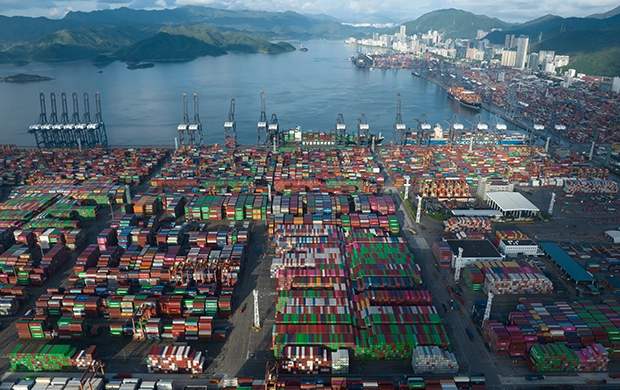U.S. imports from Asia hit a six-month high in April as shippers sped up their cargo on the Eastbound Trans-Pacific, because they were faced with an anticipated round of general rate increases (GRIs) by ocean carriers.
According to PIERS, Asia imports to the U.S. reached 1.35 million TEUs in March. While April imports were down -18.6% compared to a year ago, they grew nearly 25% month-on-month (m/m). Imports from China alone reached 793,604 TEUs, up from 581,479 TEUs in March. Overall container imports to the U.S. in April fell -17.4% year-on-year (y/y) to 2.02 million TEUs but were up from 1.75 million TEUs in March.
Last month, U.S. shippers faced a round of GRIs ranging from $600 to $1,200 per FEU that went into effect on April 15. To support those GRIs, ocean carriers canceled many weekly vessel services from Asia. Sea-Intelligence Maritime Analysis said 502,400 TEUs of capacity, amounting to nearly 20% of ships deployed to both the North American West and East coasts, was blanked during April. The result was that ships saw over 80% utilization in the Trans-Pacific trades, according to data from Linerlytica.
Carriers are still trying to push through rate increases for May and June. Meanwhile, there is little market reaction to the GRIs, according to the Shanghai Containerized Freight Index (SCFI). Ocean carriers have not canceled as many sailings in May as they had in previous months. Sea-Intelligence data shows only 315,500 TEUs of capacity were blanked in May, amounting to just about 12% of deployed ships in the Trans-Pacific.
2023 volumes are not likely to close the gap with 2022 levels until late in the third quarter. The National Retail Federation (NRF) forecasts that May 2023 import volumes will be down -23.5% y/y but projects the y/y but projects the y/y deficit to be significantly reduced by September, with imports for that month expected to be just -3.4% lower than the previous year, according to the NRF.
Source: Journal of Commerce

